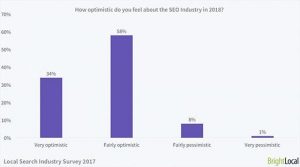Building a business website is vital for business success in the internet age, but content marketing requires a lot more than just having a website. For the best success, your website should be filled with great content. But to make sure people actually come and see that content, you need to do a little more with content marketing to promote your content. If you run your site on WordPress, as more than 25 percent of sites do, you have some extra tools at your disposal, some for free, that can help you amplify your reach and drive traffic to your business website.
Jetpack
WordPress.com has a few cool features that self-hosted WordPress sites don’t get by default. You can turn them on with Jetpack, a freemium plugin from Automattic, the company that makes WordPress. Jetpack is loaded with features including site stats, rich galleries, security, and community features. But today, we are focused on social sharing features, which come through the Publicize module.
Once activated, you can connect your site to social networks like Facebook, Twitter, LinkedIn, and Google+. When connected, any new posts will automatically share to your connected social account. Jetpack also offers sharing buttons to embed in your blog posts and pages with one-click options to share to Twitter, Facebook, LinkedIn, Reddit, Pinterest, Pocket, Google+, Tumblr, and other platforms. You can pay to do more, but everything mentioned here in the Jetpack plugin is completely free to use.
Buffer
Buffer is a social media management tool that helps you plan and schedule future social media postings. The free version allows you to connect one account per platform at Twitter, Facebook, Instagram, LinkedIn, and Google+, and you can schedule up to ten future postings on each account. The free version is great if you want to stop in once per week or have an assistant drop in and schedule your posts, or you can pay for the premium version to do a little more automation.
Paid versions start at $ 10 per month and add Pinterest support, additional pin schedules, more accounts, and shared access with team members. Premium versions also give you the option to add an RSS feed, which is a syndicated feed of all blog posts from a website. If you use WordPress, you already have feeds up and running at yoursite.com/feed. You can view the Due.com RSS feed here. As you can see, the RSS feed contains a stripped down version of your posts with no formatting and some extra information tools like Buffer can use to extract the title and other content for other purposes, like sharing on social media.
MeetEdgar
Buffer is great for scheduling future content for a one-time posting, but some content on your site is likely evergreen and can be shared on Twitter, Facebook, and other sites periodically. MeetEdgar allows you to create custom queues of content to schedule out for the future on Facebook, Twitter, and LinkedIn. I have been a paid MeetEdgar user for my site, Personal Profitability, since December 2015.
I love the ability to build queues that re-post my most popular and most useful content again and again on a regular or random schedule. I gave my virtual assistant access to my Edgar account so she can add new posts, queue up custom images, and review new posts that Edgar automatically imports from my RSS feed to add to various queues. I don’t like to re-post my monthly income reports, but do want to add evergreen content that never goes stale for future re-shares.
Sumo
Sumo comes from Noah Kagan and the team at AppSumo. Formerly called SumoMe, the tool took on a new name after Noah spent $ 1.5 million to buy the domain Sumo.com earlier this year. But the tools remain just as useful and are continually updated. There is a free version available, but the real power is unlocked with the paid version that starts at around $ 30 per month. I have used SumoMe on my sites since September 2014.
Sumo’s most valuable tools to me are its email list building features, but it also comes packed with social sharing tools in the same plugin. Sumo allows you to add smart sharing buttons that stick to the side of the reader’s screen while scrolling through your posts, options to share images directly to social networks, and highlight and share text. For me, the list building features make the cost worthwhile, but the social sharing is a great perk! Sumo works both with WordPress and non-WordPress sites.
Social Warfare
Social Warfare is a WordPress plugin with specialized features to control how your content looks when shared on Pinterest, Facebook, and Twitter. I paid for an annual premium license specifically for the Pinterest features, but the Twitter and Facebook optimization is great as well. I make sure Social Warfare is configured for every new post and my assistant has gone through and added Social Warfare data to some of my older, popular posts as well.
Social Warfare helps you add and customize sharing buttons around your site, like those bars of social icons above and below blog posts on many sites. You can also enter custom meta data that social networks use to pick the title, image, and shared content when a link is shared. For example, every time anyone shares one of my new posts on Facebook or Twitter, a specific formatted image for those networks populates the entry. For Pinterest, a dedicated Pinterest formatted image is selected.
Don’t ignore social sharing
Social media can be a huge source of visitors and customers for your business, but it doesn’t work if you ignore it. Follow social media best practices, use the best tools, and focus on the users. If you do, success should follow shortly.
Digital & Social Articles on Business 2 Community(111)





